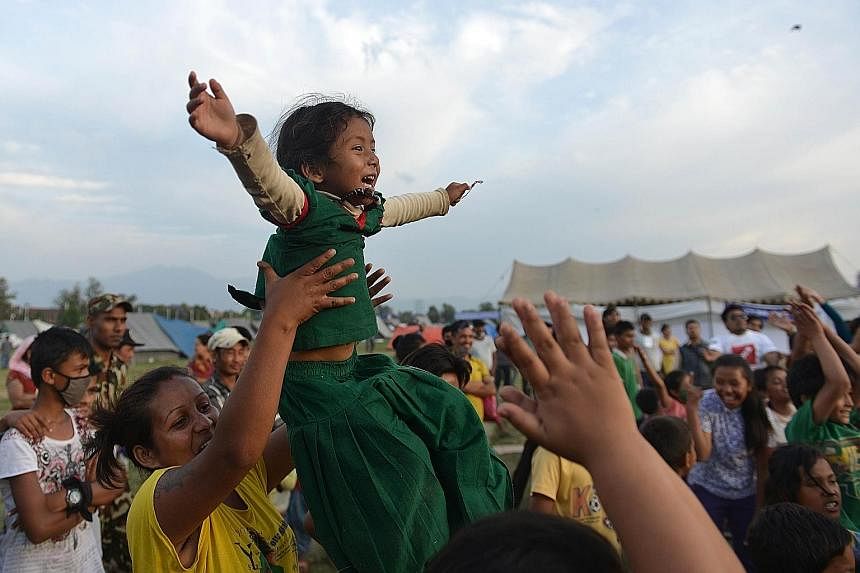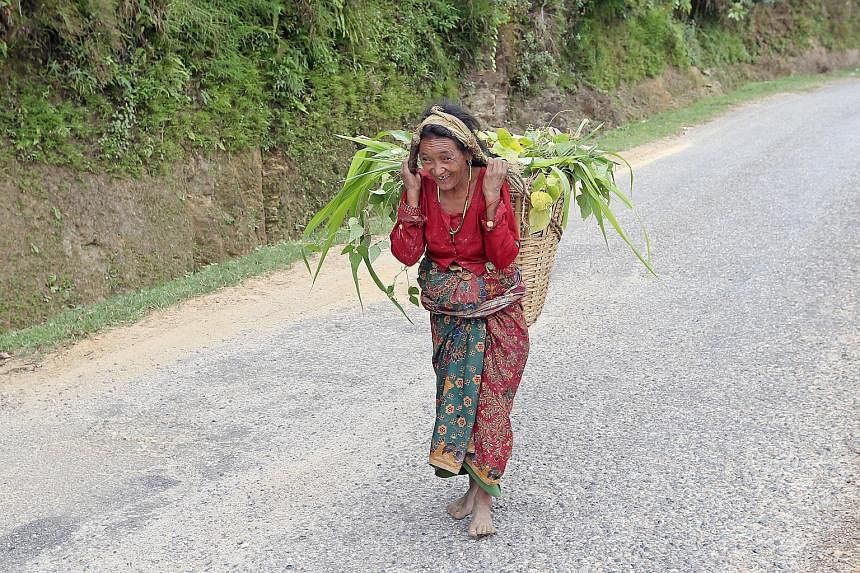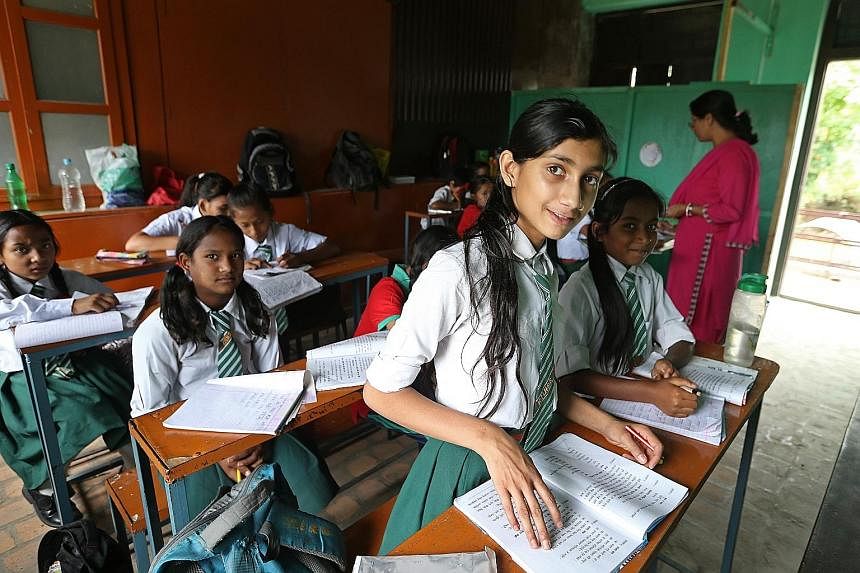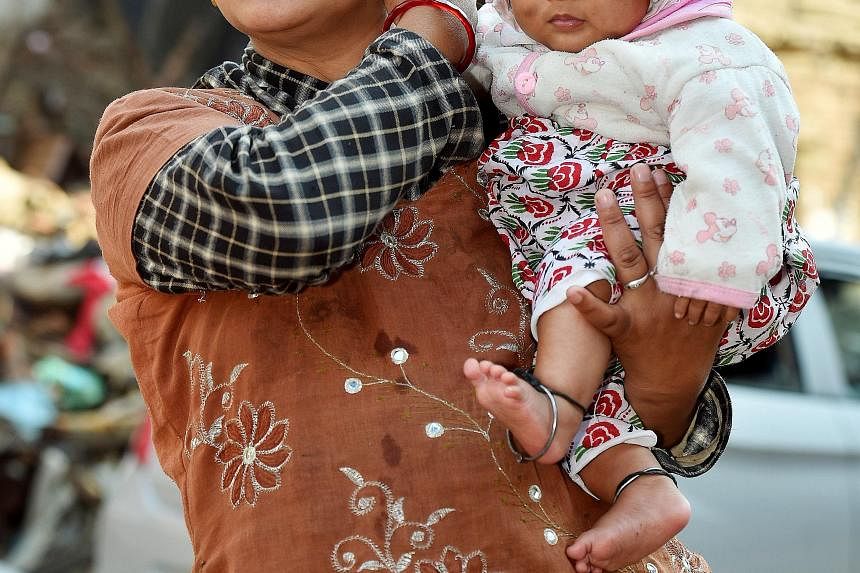B efore I left Kathmandu early this month for the Asia Journalism Fellowship programme in Singapore, my nine-year-old daughter Aaryaa said, eyes brimming with tears: "Baba, you are so lucky! There is no earthquake in Singapore. I wish I could go with you."
Her words left me speechless. I was about to leave my wife, daughter and extended family barely five weeks after the April earthquake which devastated much of central Nepal. Our home had withstood nature's fury, but we were still experiencing aftershocks and my daughter was still traumatised.
Most Nepalis are still struggling to come to terms with the loss of nearly 9,000 lives and thousands more homes.
I knew before I arrived here that Singapore and Singaporeans were among the first to reach out to my country in the days after the earthquake. And all month I've noticed that people here are still helping Nepal. Like so many in my country, I am grateful.
But I've also been taken aback to find that many Singaporeans think Nepal was reduced to rubble by the 7.8-magnitude earthquake. They are not alone. When disaster struck, the whole world saw pictures only of death, devastation and ruins of what were once homes, offices and monuments.
But the reality is different: Only 14 of Nepal's 75 districts were badly affected. In three districts of the Kathmandu Valley, the worst-hit, just 2 per cent of homes were destroyed and around 20 per cent suffered partial damage.
Some heritage sites were hit hard but most are safe. Of Nepal's eight Unesco heritage sites, three were damaged. Even in these, nearly 60 per cent of the archaeologically important monuments remain intact. The affected heritage sites have been reopened to tourists since June 15.
I keep telling people I meet that most of Nepal's attractions are unaffected.
The trekking route of Langtang National Park was damaged but eight other natural national parks, three wildlife reserves and four conservation areas are open.
All highways, roads, national and international airports are intact; people can move about without having to worry about food, accommodation or transport. Telecoms, banking, Internet and hospital services are very much in operation.
In the worst-hit villages, reconstruction is in full swing and people have started their lives afresh. Children who lost their schools or classrooms have resumed lessons. Nepalis are picking themselves up, even those who were among the hardest hit.
I remember Santa Bahadur Waiba, a man I met three days after the earthquake in Sindhupalchok, the worst-hit district, where more than 3,500 people died. The father of three and grandfather of one had lost his house, but his spirit was intact. He had salvaged wooden poles, planks and zinc sheets from the rubble of his house, and fashioned a new home.
When we met, he was all smiles, pleased with the shelter he had put together. "My house collapsed, the government did nothing, but I rebuilt it on my own," he said, eyes glistening with pride.
To me, he represents the resilience of Nepalis.
In other badly affected areas, I was struck that despite their loss and tragedy, survivors would offer to share their lunch or a snack. In Kavre, a district that suffered an enormous toll on life and property, an elderly man apologised for having no food to offer. Then he said, the hope clear in his voice: "Please come to our village next year, we shall dine together."
I met a young mother back from the brink of tragedy. When Ms Rasmila Awal's house came tumbling down, her five-month-old baby boy was buried under the rubble. It took 20 hours for him to be rescued alive, and everyone called it a miracle.
"What I lost can be rebuilt," she told me, referring to her home. Cradling her baby, the mother of two added: "What I could not have rebuilt is not lost. So why would I worry much?"
In the days after a disaster, the stories and images that go out to the rest of the world tend to be mainly of death, destruction and everything that's going wrong.
Stories of people rebuilding their lives, or the fact that much of the country is unaffected, are less interesting to the international media teams that descend on the scene.
To us Nepalis, there was something unreal - even offensive - about seeing our entire country portrayed as a scene of devastation and hopelessness for days on end.
At the time, I was an associate editor at Nagarik, one of Nepal's leading vernacular dailies. Of course, we too ran stories of loss and misery in the initial days.
But on Day Four, we published a photo of little girls returning home happily after spending three nights in tents. Their faces made us think harder about how survivors were responding to untold personal tragedy.
As a newspaper, we could continue writing about those who had died and we would have sad stories and pictures to last a year or more.
Or we could do something different. We chose to move away from stories and pictures of crying people and to start showing how victims were picking up the pieces of their shattered lives.
One of our headlines, which captured it all for me, was: "The smile is still here." We also produced a supplement titled "Hope", with inspiring stories and pictures.
This did not mean we neglected reporting negative stories about delayed distribution of relief supplies, or the distribution of rotten food grains. We kept readers informed of the risk of landslides in the looming monsoons, and pressured the authorities to relocate vulnerable human settlements.
Reconstruction is under way and my country is grateful for the support we have been receiving from the international community. But financial aid is not all that we need.
If you want to help Nepal bounce back, plan a trip there because so much of it is open for business as usual. Come help revive our tourism and keep our spirits up.
I've been in Singapore for four weeks now. Aaryaa, back to her routine of school and playing with her friends, said to me the other day as we chatted over Viber: "Baba, we're safe now. You don't need to stay in Singapore any longer. Come home soon."
She left me speechless yet again, this time for a different reason.
The writer, a journalist of 18 years, is a participant in the 2015 Asia Journalism Fellowship, an annual programme run by Temasek Foundation and Nanyang Technological University's Wee Kim Wee School of Communication and Information.





